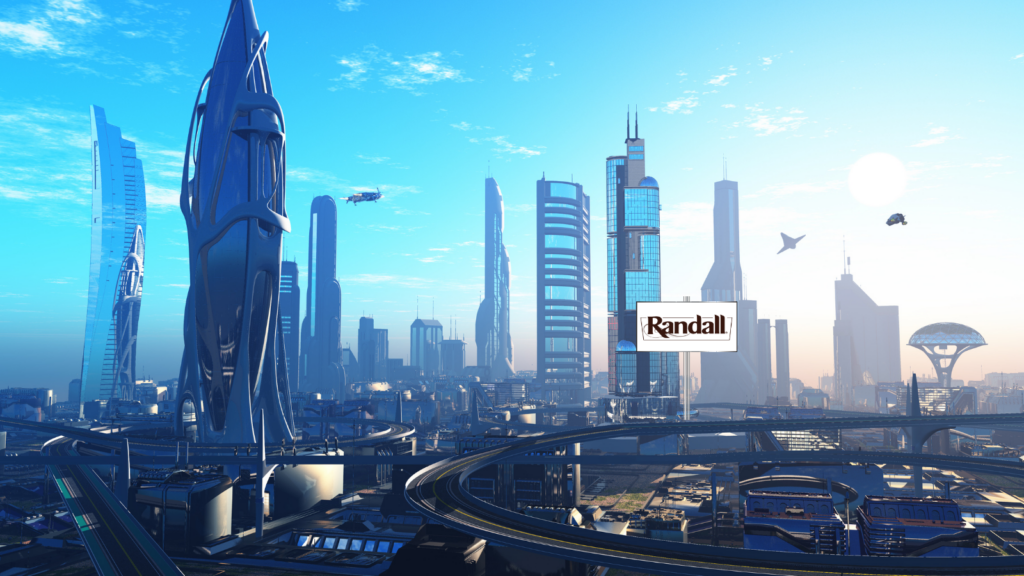
If we told you that you could use beans to address the food, cost of living, and climate crises all at once, you’d probably think we had a few too many beans between the ears. It sounds too good to be true!
But these little powerhouses of nutrition are delicious, healthy, easy to produce, and environmentally friendly! Beans are a sustainable primary food crop that offers versatile and inexpensive nutrition.
1. Beans positively affect the soil they’re grown in.
Beans are known as a “nitrogen fixer” in the farming world. That is, bean plants have a symbiotic relationship with special bacteria that can access nitrogen that’s loose in the atmosphere—where it’s inaccessible to most other plants—and deposit it into the soil where other plant root systems can use it. Nitrogen-fixing is a crucial part of the sustainable farming cycle, because healthy soil makes healthy food crops, and healthy food crops make healthy people.
Once beans have replenished nitrogen supplies in the soil, that nitrogen can go on to fuel many generations of future plant crops.
2. Beans reduce the need for synthetic nitrogen fertilizers.
Sometimes, farmers try to circumvent the critical nitrogen-fixing step in the cycle by artificially adding nitrogen fertilizers to their crops. Although this works, it’s not good for long-term soil health. Additionally, the fertilization process costs farmers time, effort, and money. This extra cost gets passed on to consumers through higher food prices, which is a problem for poorer populations.
Synthetic nitrogen fertilizers are also often near the top of the “blame” list when environmental groups study the effects of pollution. Synthetic fertilizers—not to be confused with natural fertilizers, such as manure—can be toxic to the environment when they wash into wastewater discharge areas or seep into nearby lakes, rivers, and streams.
Using beans as a nitrogen fixer is a great method for reducing the need for synthetic fertilizers. Farmers can use beans to replace depleted nitrogen in the soil and then plant other nitrogen-dependent crops on the enriched soil. Even if beans can’t completely negate the need for fertilizers, they lessen the nitrogen depletion significantly enough that farmers can often make up the difference with natural fertilizers, such as composted manure.
3. Farms that use natural nitrogen fixers help preserve water quality.
When excess synthetic fertilizer washes into nearby water sources, it affects plant and animal life. Specifically, high nitrogen concentrations from synthetic fertilizers can lead to eutrophication, where aquatic plant life explodes (algae blooms are a prime example) and all other aquatic life dies from a lack of oxygen. These dead zones disrupt entire ecological systems that nature usually is able to keep in balance.
If you’ve seen a pond with an overabundance of algae formations and very few living fish and frogs, you’ve seen eutrophication in action on a micro-scale. On a much larger scale, excess nitrogen and other nutrients that seep into major waterways can make their way to large rivers and oceans, killing off swaths of fish, oysters, clams, and scallops and destroying essential fish habitats for the creatures left behind.
The good news is that sustainable farming practices—including but not limited to using beans and legumes as nitrogen fixers for healthy soil and supplementing with natural animal fertilizers—combat eutrophication. Without the massive influx of nutrients from synthetic fertilizers, waterways stay cleaner and aquatic environments exist in harmony.
4. You don’t need much water (comparatively speaking) to grow beans.
If you’re a home gardener, you know you must supply your plants with the optimal ratio of sunlight and water for them to thrive. Sunlight is relatively easy to come by since it radiates from the sky free of charge. But on a large scale—for example, large farms with hundreds of crop rows—obtaining adequate water can be a challenge.
Water must be piped in from a nearby source and then distributed evenly across crop fields without over- or under-soaking any particular area. You may have seen large irrigation arches on the side of the road drenching crops in a field. It’s an impressive endeavor, especially in locations where water is scarce and expensive. Imagine you’re a farmer in a country without accessible modern irrigation solutions, and you can imagine the difficulty of growing crops reliably year after year.
Beans don’t solve this problem completely, but they do make things a little easier on farmers. Beans don’t require as much water as other major food crops. This means farmers expend less effort and money irrigating bean fields, and those savings can be passed on to people who rely on those crops to feed their families.
5. Beans are a wonderful “break crop.”
Modern farming practices typically involve monocropping. Farmers choose a field for corn, another for soybeans, another for wheat, and so on, and they plant those fields with the same crops year after year. Eventually, the soil becomes depleted because the same crops deplete the same nutrients in the same areas for years at a time. This means farmers need to mega-dose their soil with the synthetic fertilizers we’ve already discussed to reintroduce the depleted nutrients that crops need to grow.
A much better alternative to monocropping is the method of crop rotation. Rather than planting the same crops in a field every season, farmers rotate crops from field to field. Each crop type requires a different balance of nutrients, and some—such as beans—even replace depleted nutrients back into the soil to be used by future crops. This dramatically reduces the need for fertilizer, as we’ve discussed.
Crop rotation also cuts down on recurring pests and diseases. If a particular crop is afflicted by pests that overwinter in the soil, for example, those pests will thrive in a monocropping environment. Every year, the farmer comes back and feeds the pests their favorite food. And, every year, the same pests and diseases return. This means in addition to fertilizers, farmers have to treat crops heavily for disease and pest control.
Simply rotating crops to a new environment can break this cycle. Many diseases and pests will affect only one type of crop, so they die off when the crop changes the next year.
Beans are an excellent “break crop,” or a crop that breaks the cycle of diseases and pests affecting fields. This is because beans are resistant to many of the common diseases and pests that emerge season after season. Farmers can take advantage of the healing power of beans and crop rotation by rotating bean crops through their various fields.
Indirectly, this means fewer pesticides and disease-controlling sprays leech their way into our soil and waterways.
6. Beans provide a hefty amount of plant protein for people who don’t have reliable access to animal proteins.
In 2022, several organizations brainstormed ways to feed the roughly three billion people on earth who they estimate are malnourished. With global protein needs rising along with the world’s overall population, malnourishment will only worsen worldwide.
This 2022 coalition sees one clear path forward. Cleverly, they’ve named it “Beans is How.”
They’re trying to answer the question of how to feed billions of people a sustainable source of protein, and their answer is beans is how.
At an average cost of $1 per pound of beans (at the time of the study), and with a good supply of vitamins and minerals that can help keep malnourished populations healthy, beans promise to be part of an economical solution for world hunger.
Beans, which are not a complete protein, must be paired with another source of protein that provides the amino acids that beans don’t have. This pairing is relatively simple and also economical. Corn and rice, which combine deliciously with beans in many cultures, are a source of those missing amino acids, just as beans fill in the gaps left by those plants.
Beans are also a fantastic source of fiber. Many people don’t eat enough fiber each day. Including beans in meals every day can improve population health while keeping food costs manageable.
Can’t find Randall Beans at your local store? You can buy them online. Choose from any of our Priority Packs (shipping included) for an economical, conveniently packaged, and tasty answer to your bean cravings!

